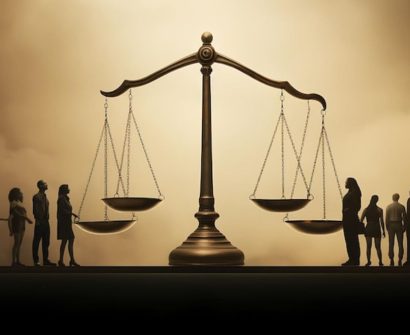
Introduction
A societal evil that has been around for an extended period is caste discrimination, which is particularly prevalent in South Asia, especially in India. Severe social, economic, and political inequality has arisen from the centuries-old caste system, a hierarchical classification of society based on birth. caste discrimination is still widespread in society even in spite of legislative frameworks as well as affirmative action initiatives designed to mitigate its impact.
caste discrimination meaning
- Serious abuses of civil, political, economic, social, and cultural rights occur when caste prejudice occurs.
- Although it is frequently prohibited in the nations where it occurs, Dalits are essentially left without legal protection due to a lack of legislative enforcement and caste prejudice in the legal system.
caste discrimination: Historical Context
- India is where the current caste system originated. In the centuries before the British Raj, the division of the Mughal Empire contributed to the rise in popularity of caste stereotypes as a means of securing social rank and political legitimacy.
- These were based on old Hindu social hierarchies that, according to many academics, traded on ideas of ritual contamination and purity. Caste developed during British control as a practical and helpful shorthand for the region’s complexity.
- At the time of the Indian independence struggle, there had been some progress in efforts to undermine caste systems. India’s constitution outlawed caste prejudice in 1950 and included a quota system to make up for earlier wrongs committed against the lowest castes.
caste discrimination in india: Laws
- The Indian constitution’s Article 14 states that no one may be denied equality before the law or equal protection under the law wherever in Indian territory.
- Article 15 forbids the state from treating any citizen unfairly on the basis of their place of birth, race, caste, religion, or any combination of these.
- According to Article 17, untouchability has been eliminated and its practice is prohibited in all forms. The first Indian law to be put into effect that punished the teaching and practice of “untouchability” as well as any related material was the “Protection of Civil Rights Act, 1955.” The Indian government passed the Scheduled Castes and Scheduled Tribes (Prevention of Atrocities) Act in 1989, which outlawed the use of violence and discrimination against Scheduled Castes and Scheduled Tribes by non-scheduled castes and tribes.
caste discrimination cases in india
The cases relating to caste based discrimination in india are as follows:
Tabrez Ansari Incident
- Tabrej Ansari, a Jharkhand native. On June 17, he was traveling back from Jamshedpur with two other buddies. On June 17, 2019, he was apprehended by a group of persons on suspicion of theft. According to his family, he was beaten by a mob and made to recite Jay Shree Ram and Jay Hanuman. On June 22, just four days later, Tabrej Ansari passed away. He was slain by a mob merely for being a Muslim and failing to recite Jay Shree Ram and Jay Hanuman.
Rohit Vemula Incident
- The event involving Rohit Vemula is well known to all. Ph.D. candidate Rohit Vemula attended the University of Hyderabad. A student from the Bhartiya Janta Party named Akhil Bharatiya Vidyarthi Parishad (ABVP) lodged a complaint against Rohit Vemula. Along with four other students, Rohit Vemula has been suspended by the university. The university also revoked Rohit Vemula’s and four other students’ scholarships. Four students and Rohit Vemula put up a tent inside the campus and began a hunger strike since they could not afford the costs.
caste based discrimination: Important Government Initiatives
Constitution (Scheduled Castes) Order of 1950 (amended in 1956 & 1990):
- Dalits, including those who were Hindu and those who had converted to Buddhism and Sikhism, were recognized as Scheduled Castes. A number of petitions asking for the inclusion of Dalit Muslims and Dalit Christians as Scheduled Castes are currently being heard by the Supreme Court.
Pradhan Mantri Kaushal Vikas Yojana (PMKVY):
- In order to boost production and match training and certification to national needs, it seeks to encourage young people to pursue skill development.
SANKALP Scheme:
- The Ministry of Skill Development & Entrepreneurship (MSDE) runs the outcome-oriented Skills Acquisition and Knowledge Awareness for Livelihood (SANKALP) program, which places a particular emphasis on decentralized planning and quality improvement.
Conclusion
India has made great strides toward recognizing caste-based discrimination as a social ill and enacting laws to counter it. However, there is still a long way to go before regulations are implemented successfully. Laws by themselves cannot address these kinds of socioeconomic challenges. The sentiments of the populace and their desire to abide by the law are crucial in this situation.
The majority of SCs and STs continue to be socially and economically marginalized, which renders them more vulnerable to crimes because they do not have access to legal defense. This is another crucial point to remember. Crimes against the scheduled castes persist despite the fact that this struggle started in the 19th century. Therefore, it is not entirely baseless or illogical for Dalit organizations to express concerns regarding the alleged shortcomings of the Scheduled Castes and Scheduled Tribes (Prevention of Atrocities) Act.










